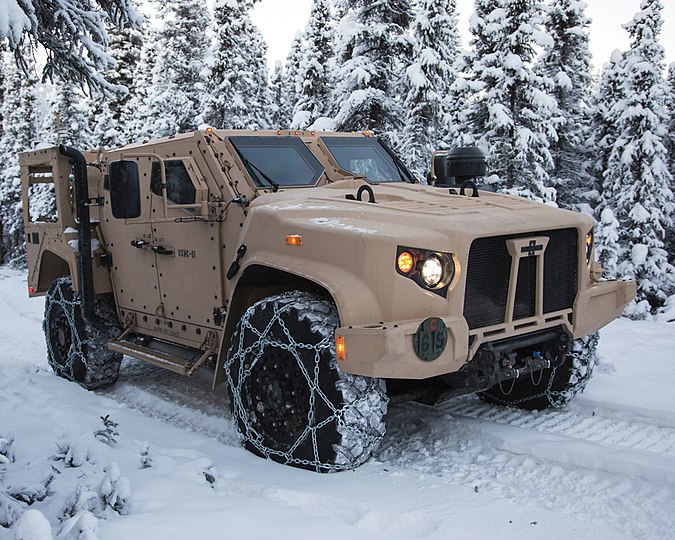
The future of military ground mobility is rapidly evolving as the Marine Corps and U.S. Special Operations Command (SOCOM) test advanced capabilities of the MRZR Alpha vehicles. These light tactical platforms, developed by Polaris, have been engineered to address the growing need for multifunctional, adaptable vehicles that cater to the complex demands of modern military operations.

Polaris is close to producing a version of its MRZR Alpha vehicle that can power offboard systems. Additionally, a heavy-payload variant is currently being tested by the Marine Corps and U.S. Special Operations Command, according to the manufacturer in a statement to Defense News.

John LaFata, the program manager, mentioned that the primary focus for the Marine Corps over the past year has been developing the MRZR light vehicles’ capability to generate electricity for radars, networks, weapons, and other equipment.

To achieve this, Polaris developed two solutions: a 1-kilowatt exportable power system that can be retrofitted to existing vehicles via a kit, and a 5-kilowatt system that can be integrated into new vehicles during production.

Both systems utilize a DC-to-DC power converter connected to the existing MRZR alternator to provide 24-volt power. The system communicates with the engine to determine the power required, increasing engine speed only when the connected weapon or sensor demands more power, according to the company.

LaFata explained that these power export systems enable Marines to use technology without needing to carry a separate generator. For instance, they can utilize the extra power to run the Networking On-the-Move satellite communications system, the Common Aviation Command and Control System—which integrates data from air- and ground-based radars and sensors—and the light version of the Marine Air Defense Integrated System.

He mentioned that one of the Marine Corps’ requirements is that the power-export technology should not occupy any cargo space. Therefore, Polaris designed its system with a DC-to-DC converter placed between the two rear seats, a power distribution unit and fuse box located in the pillar next to the rear passenger side seat, and a small switch installed on the dashboard.

LaFata demonstrated the kit installed on a vehicle at the Modern Day Marine conference earlier this month, noting that unit maintainers can install the 1-kilowatt version themselves.

This year, Polaris delivered several prototypes of the 5-kilowatt variant to the service, which are currently undergoing testing at the Nevada Automotive Test Center. LaFata stated that production for both variants is expected to begin in the third or fourth quarter of this year.

Additionally, Polaris is collaborating with the Marine Corps and Special Operations Command to secure funding for this initiative through an engineering change proposal to their existing Ultra Light Tactical Vehicle and Lightweight Tactical All Terrain Vehicle contracts.

In another initiative, Polaris is collaborating with both organizations to assess the potential demand for an MRZR vehicle with six times the payload weight capacity.

This endeavor involved modifying the two-seat MRZR Alpha by incorporating a mid-drive axle and extending the deck, resulting in a longer truck with increased payload space and weight capacity—now able to carry 3,600 pounds, compared to the traditional two- and four-seat Alphas’ capacity of 600 pounds. LaFata highlighted that despite these modifications, a V-22 Osprey aircraft can still internally transport the vehicle, which maintains over 90% parts commonality with the original Alphas.

“It just offers numerous capabilities. Again, following the Alpha concept, which emphasizes modularity and versatility, it serves as a Swiss Army knife of a vehicle, adaptable for various tasks such as casualty evacuation, logistics, and lethality,” he explained.

In January, Polaris delivered several vehicles to both the Corps and the command for experimentation purposes. For instance, the Marine Corps Warfighting Laboratory has conducted logistics exercises and precision-fires tests with the prototype, as the service evaluates potential uses and assesses if there’s a demand for it.

LaFata noted that Polaris identified a gap in the vehicle inventory between the MRZR and the Joint Light Tactical Vehicle and believed they could address it by introducing this heavy payload version of the MRZR. Currently, they are placing the prototype in the hands of operators to ascertain if it indeed fulfills this gap.
Relevant articles:
– Marines, special ops test MRZR vehicles that add power, payload capacity, Defense News
– SOF Week 2023: MRZR Alpha will receive new capabilities, Shephard Media
– SOCOM Shows Interest in Hybrid, AI, National Defense Magazine
– New Tracked MRZR Buggy Can Keep Special Operators Comfy On Arctic Missions, The War Zone

